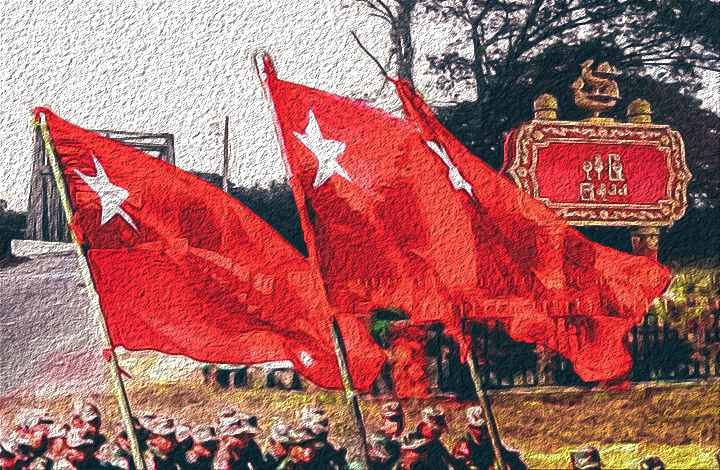Myanmar Spring Chronicle – December 03
MoeMaKa, December 04, 2023
KNU/KNLA and Allied Forces Seize Mone (Moo) Town; Another Brutal Massacre Unfolds in Sagaing Division
On December 2, RFA reported that the joint forces of KNU, BPLA, and PDF initiated an assault on Mone (Moo in Karen), Kyaukkyi Township, Bago Division, bordering the northern part of Karen State. The forces successfully captured a camp and a battalion on December 3, although complete control over the town is yet to be confirmed by other news sources.
Situated in the eastern part of the Sittaung River, Bago, Kyaukkyi, and Mone are regions inhabited by Karen ethnic groups, strongly influenced by KNU military activities. With a population of 12,000 people, Mone has long been under the dominance of KNU. Westward, across the Sittaung River, Zeyawaddy lies on the Yangon-Mandalay highway and railway.
This capture marks the takeover of a military-controlled battalion by KNLA and allied forces, potentially posing a renewed military threat to the eastern side of the Sittaung River after the seizure of Mone.
Another distressing development in today’s news reveals a mass killing in Kya Paing Village, Monywa Township, Sagaing Division. At least 18 male villagers were brutally killed, with their bodies disposed of by being thrown into their homes, which were subsequently set ablaze after a raid by military council troops. Over 50 villagers were arrested during the operation.
The military council’s troops conducted a morning raid on Kya Paing Village, situated a mere 6 miles from Monywa, apprehending more than 50 residents who were unable to escape in time. Subsequently, adult males under the age of 50 were interrogated and killed.
This incident follows the PDF forces’ attack on a small base camp of Pyu Saw Htee (militia) groups near Tawpu Village, close to Kya Paing Village, along the Mandalay-Monywa highway. Retaliatory actions by military council troops, in collaboration with Pyu Saw Htee, unfolded in the days that followed, as reported by locals.
Certain villages in Sagaing Division, supporting the USDP Party and the military council, formed militias after the coup, intending to aid military columns in their attacks against PDF forces. Retaliatory attacks and killings were uncommon before the armed conflict in these regions, but tensions escalated with the formation of militias.
In Kanbalu Township, a middle-aged monk known as 550 Sayadaw gained notoriety for organizing, training, and leading militia groups. These groups aimed to counterattack the PDF under the guise of a village defense organization.
The incident in Kya Paing Village, resulting in dozens of casualties and the destruction of hundreds of homes, is unfortunately not a novel occurrence in Sagaing. Such events seem deliberately orchestrated to sow enmity between neighboring villages, with militiamen from Tawpu Village reportedly aiding in the raid, as per local sources.
The residents of Kya Paing Village, grappling with the loss of numerous family members and the destruction of their homes, now bear an overwhelming sense of frustration and resentment.
Sagaing, renowned for its robust armed resistance, witnesses daily destruction of homes, civilian casualties, and arsons throughout the vast region, characterized by numerous townships.
Despite this, the political unity, organization, and coordinated attacks among anti-military council armed forces remain weak. Urgent steps toward launching joint operations as a manifestation of political and military cooperation among anti-military council forces are imperative for the Sagaing region.

